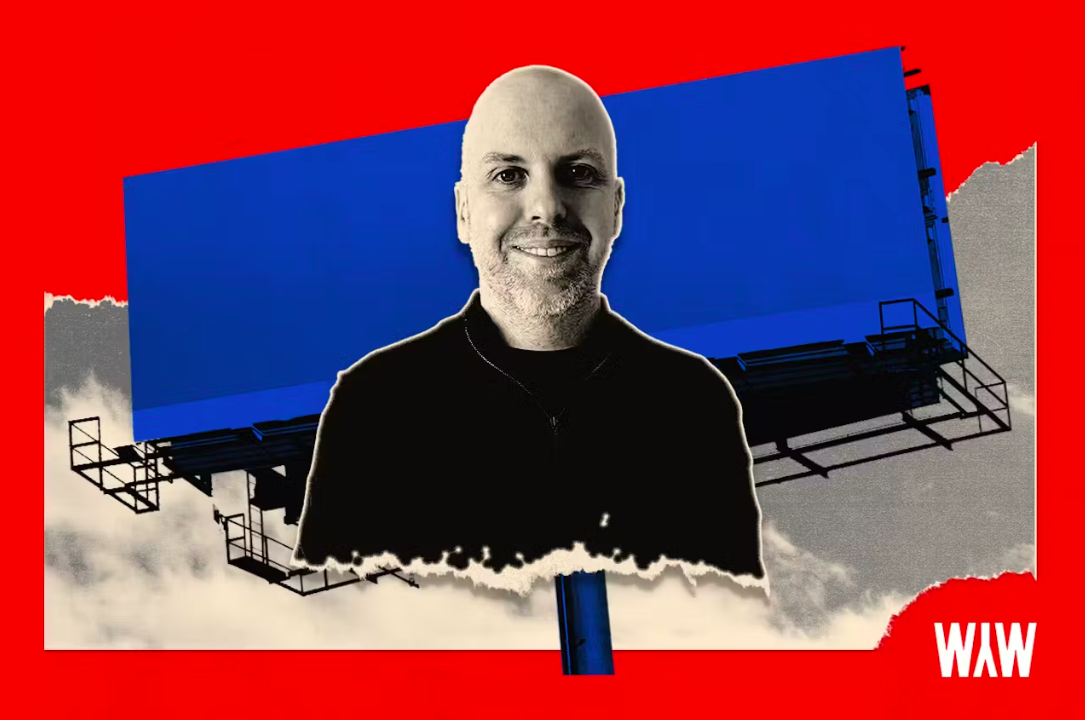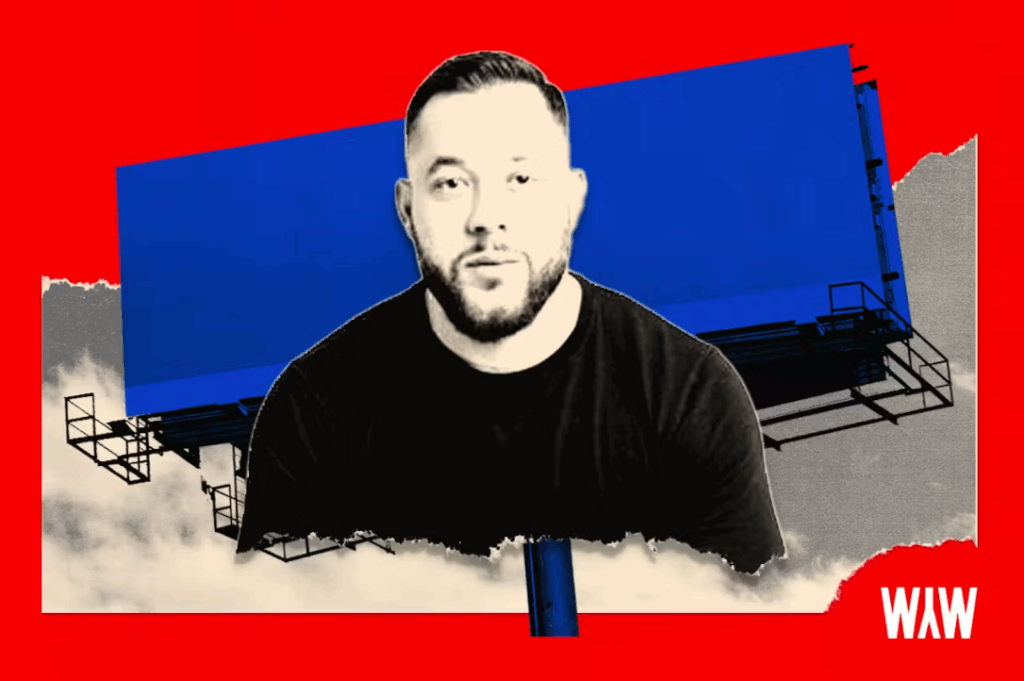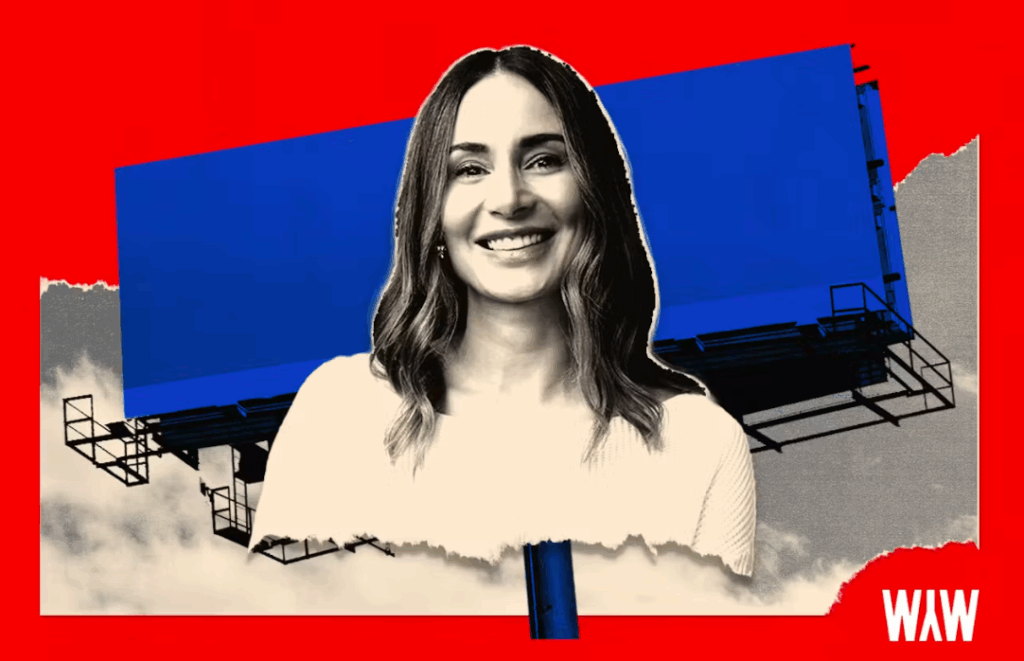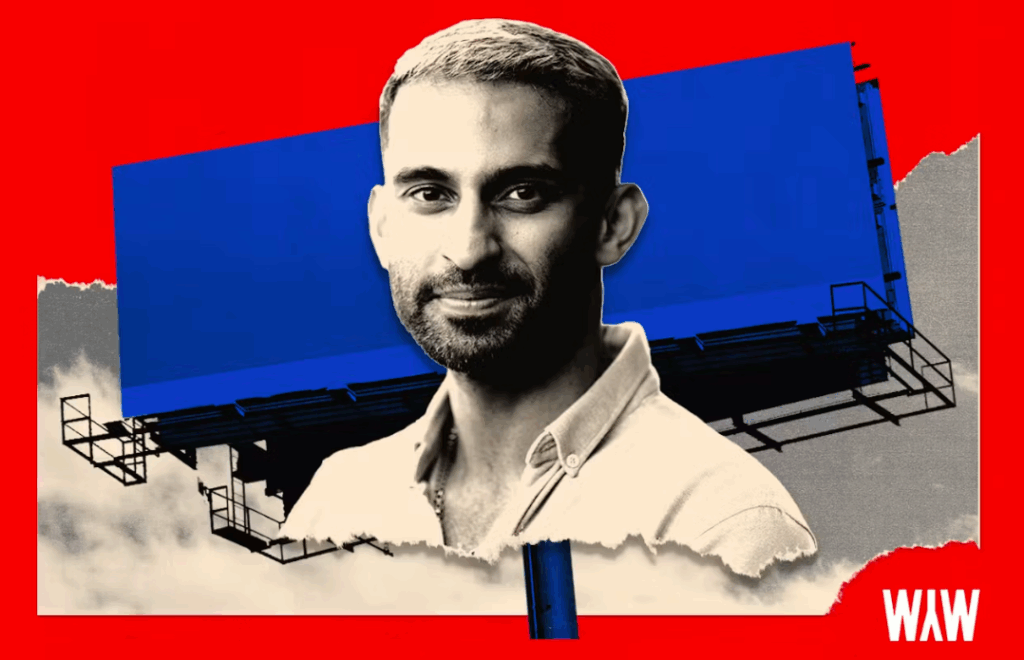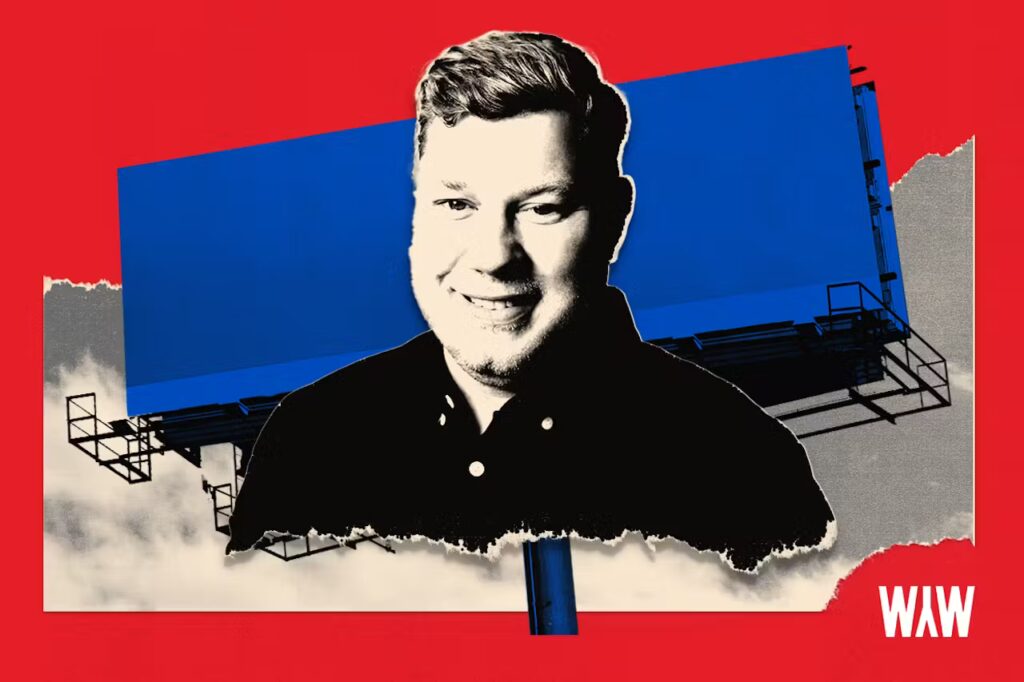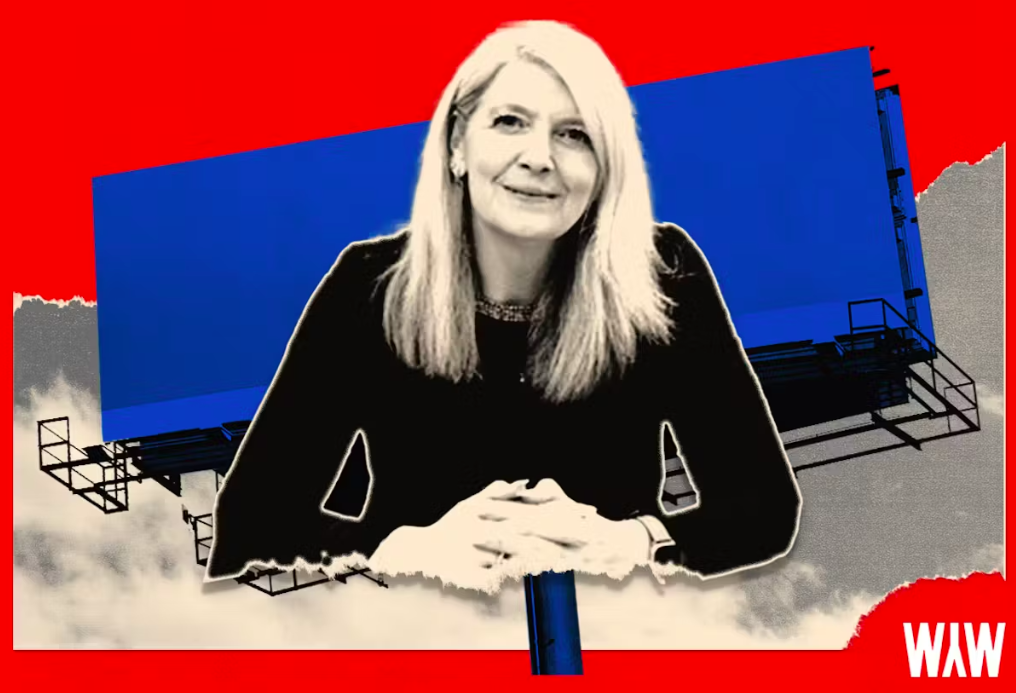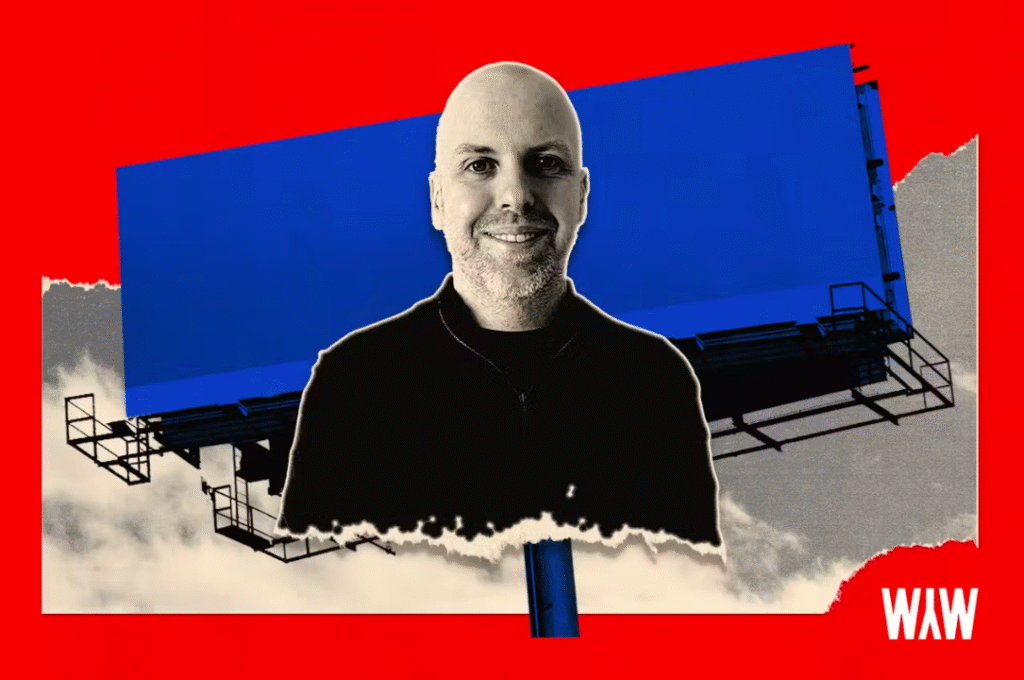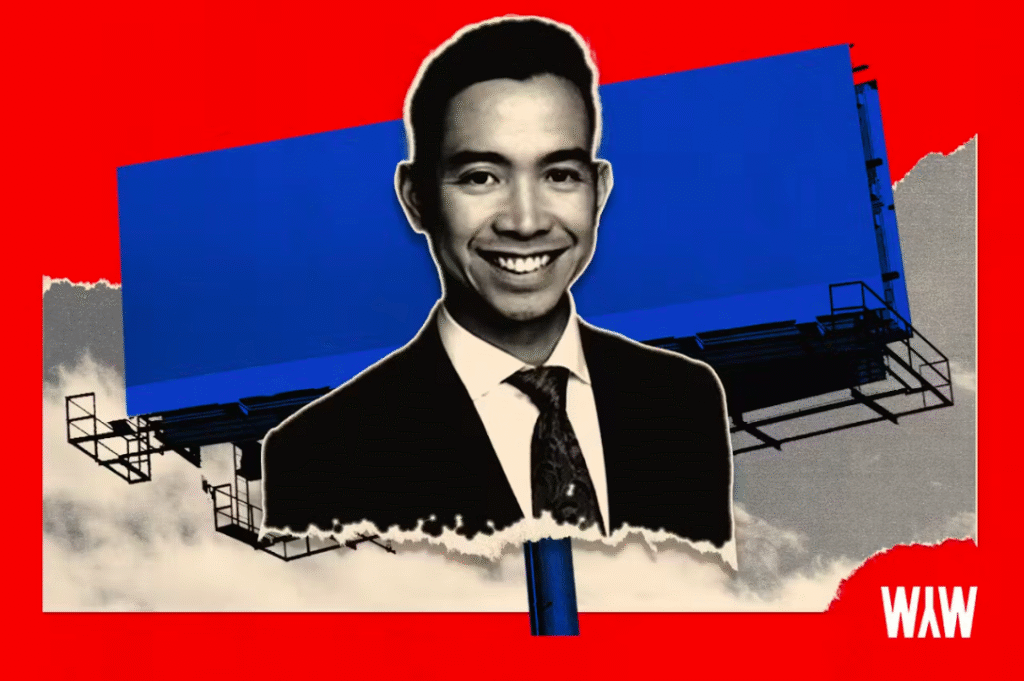Sometimes it is more about the journey than the destination. Tim Healey sits down with Domestic and General’s Adam Evans to learn how he gathered the skills throughout a varied career to become a multidisciplinary marketing leader.
Please walk us through your career Adam.
Mine is probably quite an unorthodox path into marketing, but looking back on it, all the roles add up to valuable experience. At 14, after some work experience in ‘deathly-dull’ data entry, I decided that office work was not for me, so I spent a year at music college playing the drums. I had a few different jobs after that, but after a day digging a hole in the rain on a landscaping job, I decided to go to university via an access course and studied for four years, including a year in Spain.
I knew I wanted to work in advertising and media. I was drawn towards digital marketing because I believed there was a growing demand for it. I got my foot in the door at Dot Com Republic by doing some Spanish translation, working for a modest-sized agency with big clients, and we were all very hands-on. I learned everything from PPC to SEO, social media, and analytics.
I moved on to Nelson’s, my first in-house role. I was the digital marketing expert for the business. They hadn’t invested much in digital marketing up to that point, so we built this capability from small-scale to fully integrated with the wider marketing mix. We worked on various campaigns that involved TV advertising, out-of-home and a digital through-the-line element as well.
I then worked at Which? for three years. Initially, I was on the financial services proposition and then moved on to the core subscriptions marketing team. It was an interesting time for the business: we were moving towards a more digital-focused marketing mix.
I was responsible for paid media and creative across digital channels, and integrating that with wider branding campaigns, which included radio, out-of-home and TV too. Our approach was to reach people at the research stage of their buying journey, positioning the brand as a trusted source of reviews when fake reviews were beginning to become a real issue for consumers to navigate. We drove a 20% increase in brand awareness and a 15% increase in sales across Black Friday and the January sales period.
I was then brought into Domestic and General to build the digital marketing function. I created that from scratch, setting the strategy and gaining buy-in to build a team after running proof-of-concept tests to demonstrate value. The organization was more focused on offline channels, so in addition to the practical challenges of proving the value of our spend and building a team capable of operating at scale, I’ve gradually shifted the business mindset to invest more in digital channels – and working closely with our product team, we’ve produced some really impressive results.
Looking back, my time at smaller businesses instilled a desire to take ownership, make stuff happen and not rely on others. It’s easy to fall into that trap, purely working in bigger organizations. My ‘pre-uni’ years doing wildly different jobs were valuable, too, because I really appreciate what I’m doing now and understand the value of building teams with diverse backgrounds.

What’s the offer at Domestic and General?
We’re an insurance and appliance care provider. We offer extended warranties on domestic appliances, boiler maintenance plans, and plumbing and drainage cover. The product offering will vary depending on where we sell it. We sell direct to consumers, but we also have a large ‘B to B to C’ arm that works with Sky, Argos, AO and John Lewis.
We also have manufacturer client partners like Beko and Hoover Candy, for example. So, our product often adapts based on what our clients might want from us. We also have a repair product for people who have an appliance that is already broken and who need to fix it. People don’t tend to search proactively for the insurance that we offer in the same way. Hence, partnerships with retailers and manufacturers are important.
Our insurance offer is an ongoing subscription product. Putting a marketing lens on it is very much about lifetime value for us. Limiting customer churn is very important. Our customer claims behavior is crucial too. We are focused on quality rather than quantity.
Group revenue for 2024 increased to £873m – an 8% increase on the previous year. What’s coming up for you over the next 12 months?
D&G has grown consistently, year on year, for over 20 years. In the next 12 months, marketing will focus on two main areas: first, international growth, specifically in the US and the EU. The US is a relatively new territory for us, and we have only been operating there for around three years.
Part of the challenge for my team is changing from a UK-focused team to an internationally focused team. We’re a big organization, but in the US, for example, we need to grow our brand presence.
In the UK, we’ve got a number of large, high-profile partnerships, whereas in the US, people don’t know us in the same way. We want to be at the forefront of minds.
Our immediate focus is on improving online brand perception and building out our content strategy via a new global website. The changes in SEO mean that something as simple as an AI overview can set the tone of brand perception in the eyes of a prospective partner or customer in a matter of seconds – quicker than ever before – and I think this is something all brands should be regularly monitoring and optimizing.
In contrast, within the UK, where we do have a degree of maturity, our role there is to explore how we get more value out of testing and learning. My team has consistently delivered sales growth and improved efficiency from performance marketing for a number of years, and we’re continuing to increase spend on higher-funnel brand activity. There’s an opportunity there for us; our brand awareness could be improved – sometimes even among our existing customers, where they may have become a customer at the point of sale via a retailer, for example.
Given our business model, we don’t have to go toe to toe with the competition, but it’s important to remember that trust in insurance brands is at an all-time low. There are many positive brand stories we can tell – for example, how we help reduce waste going to landfills. Having a strong, trusted brand makes our direct marketing more effective, and we’re regularly testing new ways to demonstrate this.

Drawing on your leadership expertise. What has your career taught you that helps you to have a great team?
I’ve always thought that we are all composites of our previous managers. I have definitely experienced things where I thought, ‘That’s really great leadership,’ and also the opposite.
At Nelson’s, the team was really high-performing and motivated, and we had a lot of fun. There was a good mix of creating really creative and strategic campaigns and doing what was needed to get the job done, but also having fun and not taking it too seriously.
It’s really important to try to get buy-in from your team. So, for example, if you’re inheriting people, or if you’re building a team from scratch, you’ve got to have that shared vision, and you’ve got to have everyone willing to join you on the journey.
Great teams need a sense of purpose and responsibility, and there must be room for personal development. By purpose, I really mean ‘clear, shared goals’ that everyone understands. Responsibility, regardless of your level within a business, is key so that people have that sense of ownership and the pressure that comes with that within a supportive team environment.
For personal development, I try to hire people who have room to grow within the team. This might be a literal ‘moving upwards’ progression or progressing within their role and wider skill set.
People who have that room to grow will stick around longer, and they will be driven to really develop and challenge themselves within the role. I also always consider how an individual will fit within a team, within the wider business and whether or not they will be a good cultural fit.
Finally, as a marketing leader, you need to be aware of your own weaknesses. So I’ve seen examples in the past where people hire ‘mini-mes’ – people that are basically the same as them.
The more you progress and evolve as a leader, the more you’ve got to think: ‘I can’t do all these things.’ If there’s something that you don’t particularly love doing, or are not particularly great at doing, then get someone who can and loves doing that. This way, you can focus on what you want to spend time on.

What’s your first memory of a marketing success that you were part of where you felt: this is the role for me?
The first time I felt really at home was when I was at Nelson’s, my first in-house role. On my arrival, due to regulatory changes that led to our hero RESCUE Remedy product being reclassified, we weren’t legally allowed to make some of the previous claims about the product.
We had to rethink our messaging completely. I enjoyed getting to be creative on social media. We created a really engaged community around stress management with loads of social content. We created interactive games and ran different competitions. This allowed our customers to talk about us at scale and say all these things in the comments across social media that we could no longer say about ourselves in our advertising.
It was a multi-channel campaign, and as part of that, we created a TV ad that was very disruptive. It was an ambient and minimalist TV among all the noise. We were going against the grain in a clever way, and it was a clever solution to some of the challenges we had around what we could and couldn’t say for regulatory reasons. It was my first experience bringing different initiatives together – the full paid media mix, brand ambassadors, digital PR campaigns and offline PR, and in-store activation.
A common issue among senior marketers is overcoming ‘silo mentality’ within larger teams. How can you best avoid it?
I’ve worked at a few big companies that have definitely had that. If you move towards a tribe and squad way of working, that really helps. It’s also less about the structure of your organization and more about having shared goals.
If you have different teams that need to work together and have different goals, that’s going to lead to siloed working, people looking after their own interests. Having shared goals across the organization that make sense and that have overarching oversight from someone who can keep an eye out for any conflicts of interest are both really important.
Could you tell us about the customer research discovery you’ve made that you found surprising?
Over the last few years at D&G, we’ve done a lot of work on our repair propositions.
Our assumption was that by switching from a phone-only to a web journey, we’d be improving the customer experience and we’d see a better conversion rate from media spend. This was also the desired business outcome from an operational point of view, with lower cost to acquire from online self-serve v phone.
We discovered that our original vision – what we wanted to happen from a business perspective – wasn’t necessarily what the customers wanted in reality.
There were a couple of reasons for this: one was giving them a choice of interacting with us online or actually speaking with a human on a call – letting the customer decide. It’s a “distress” purchase, and for many customers, a phone call is their preferred method in this scenario. We’ve moved to a hybrid of online and calls, and the conversion rate is far better. Giving our customers the choice was key.
We’ve also reached a point now where we better understand the customer mindset. The product is very search-driven, and when people reach out, their mindset is that a local repair representative will be able to pop around to their house very quickly and fix their machine. We offer an ongoing plan which typically works out better for the customer in the long run – but it needs to be fully explained and anchored against what they would get by just calling out a local engineer – often this is easier to do in a conversation. We also learned so much about the language that we should use online from listening in on our call centre interactions. We also learned that giving people a choice is really important too. Most importantly, our assumption that ‘we knew better’ was misplaced.
What myth about marketing would you most like to bust?
Some people outside of marketing hold the myth that ‘marketing is all fluffy and creative, it’s just about making things pretty.’ People underestimate how much data is involved in decision-making in terms of performance and management too. So whether you work in insight, performance marketing or on the brand side, there’s a lot of data that underpins the discipline.
Can you tell me about a time you had to pivot a marketing strategy due to unexpected results?
At Which?, we wanted to create a more tailored experience for new parents to improve retention for our subscription proposition. We were sending the same onboarding communications to almost everyone.
Our research indicated we should focus on the baby and child segment: new parents, parents of young kids, and expectant parents. We developed new content journeys, and initially, the results weren’t what we expected. We had improved the relevancy of the content and we didn’t get the increase in engagement that we anticipated.
We realized it was because we didn’t have enough data points to be super-precise with our content. We learned that rather than grouping all of those parents together, in fact, their needs were different. What this audience needs changes dramatically and rapidly from week to week.
To a parent, information before the birth of their child might even seem irrelevant once their child has arrived and they are actually caring for their new family addition.
So we learned that just being more relevant wasn’t enough – we needed to add genuine value for this audience and make the relevancy laser-focused. Generally speaking, if you really understand the customer and add value for them, the commercial performance we want as marketers will follow.
What advice might you give your younger self if you could go back in time?
First, it’s OK not to know exactly what you want to do. There was a point when I wasn’t sure what I wanted to do with my career, and then, over time, that became clear. I think there’s a lot of pressure on people to know as soon as they leave college or school, and I believe it is okay to take some time and find your way.
Second: if I look back at myself, five years ago, my advice would be, make sure you step out from the day-to-day more often and take stock of progress. There will always be something that needs fixing, or that isn’t quite how you want it to be – but we should all allow time to take a step back and say: ‘wow, this is how far we’ve come.’
Without doing that, we miss opportunities to celebrate success and fail to take stock of the bigger picture: to observe our journey thus far and decide where we need to go next.
What question would you like me to ask the next senior marketer when I interview them?
What’s the toughest decision that you’ve had to make this year?
Your question from the last senior marketer I interviewed is: could you tell us about a time in your career when you regretted not taking a risk?
D&G is a financial services company. We are generally risk-averse, so this is always a challenge. I think there are certain times where I’ve looked back, after a campaign has run, and I can see we got great results – but I do wonder if we could have pushed a bit harder to get a certain message included or been even bolder with the imagery.
Some of the best advertising campaigns stand out because they take risks. It’s easy to be safe, but you rarely get the best results from being safe.
In business, you’ve got to embrace change – particularly in marketing. Marketing moves faster than the average business discipline, and AI is only going to accelerate that. Technology in the next two years will change more than it has in the last 10 years. If you don’t embrace it, you’ll get replaced by it.
But beyond tech: audiences change. They grow, they increase in age, their preferences change and how they want to be communicated to changes. And not just audiences: economies, regulations – everything is on the move.
In summary: embrace change and don’t sit still for too long, because as soon as you do, you’ll be out of date.
You might die tomorrow so make it worth your while. Worth Your While is an independent creative agency helping brands do spectacular stuff people like to talk about. wyw.agency.
This interview has already appeared in The Drum. Discover the best campaigns, industry insights and interviews from world-leading marketers, creatives and more.

